References
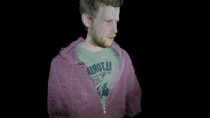
Cloud – James Minard, James George
Vimeo / Deepspeed media – via Iframely
“Augmented Reality for Bad Days” by Maddy Varner and Lauren McCarthy (2015)
Using google cardboard, “Augmented Reality for Bad Days” allows you to experience an alternate space which becomes a counterbalance to your mood or the quality of your day. By inserting and adding contextual content to a sampled environment, this google
“Augmented Reality for Bad Days” by Maddy Varner and Lauren McCarthy (2015)
Using google cardboard, “Augmented Reality for Bad Days” allows you to experience an alternate space which becomes a counterbalance to your mood or the quality of your day. By inserting and adding contextual content to a sampled environment, this google
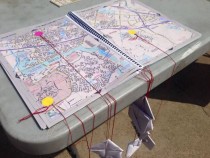
“Publish!” by Writ Large Press (2013-2015)
As I think about mapping narratives and creating narratives through interactions in space. I am sharing some of my previous work–more of a way to figure out how to build on it. Our “Publish!” series is all about engaging the public to write, curate and edit, to see themselves as part of the literary landscape.

“Publish!” by Writ Large Press (2013-2015)
As I think about mapping narratives and creating narratives through interactions in space. I am sharing some of my previous work–more of a way to figure out how to build on it. Our “Publish!” series is all about engaging the public to write, curate and edit, to see themselves as part of the literary landscape.
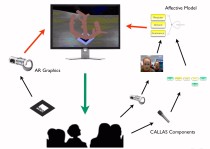
“eTree” by Maurice Benayoun (2015)
Augmented Reality for Art is subject of a dynamically-generated piece of digital art, e-Tree (Emotional Tree), developed in CALLAS as a virtual tree whose growth and evolution reflects the perceived affective response of the spectators.

“eTree” by Maurice Benayoun (2015)
Augmented Reality for Art is subject of a dynamically-generated piece of digital art, e-Tree (Emotional Tree), developed in CALLAS as a virtual tree whose growth and evolution reflects the perceived affective response of the spectators.
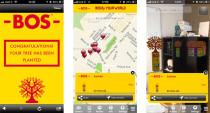
“Bosify Your World” by Bos Tea (2014)
This is a company who’s QR codes allow you to place trees around the world

“Bosify Your World” by Bos Tea (2014)
This is a company who’s QR codes allow you to place trees around the world
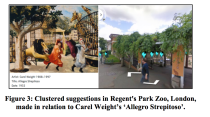
“Art Mapping” by the Tate Modern, et al. (2013-2015)
This appears to be two things (at least). One is mapping art works to their actual location in the real world. The other is tagging photographs and text to specific locations (creating art work). Comments and conversation centers around the tagged art works. I love how the art work anchors the conversation.

“Art Mapping” by the Tate Modern, et al. (2013-2015)
This appears to be two things (at least). One is mapping art works to their actual location in the real world. The other is tagging photographs and text to specific locations (creating art work). Comments and conversation centers around the tagged art works. I love how the art work anchors the conversation.
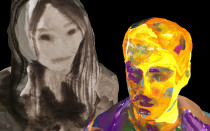
“Skin Deep” by Rosalie Yu and Alon Chitayat (2015)
Viewers are invited to paint over 3D-scanned likenesses of the artists to create “collaborative self-portraits.”

“Skin Deep” by Rosalie Yu and Alon Chitayat (2015)
Viewers are invited to paint over 3D-scanned likenesses of the artists to create “collaborative self-portraits.”
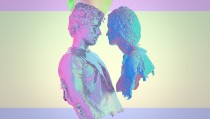
Dolorean’s “Crystal” by Joan Guasch (2015)
A music video directed by Joan Guasch for “Crystal” by Dolorean, in which 3D-scanned busts vomit amorphous crystalline forms.

Dolorean’s “Crystal” by Joan Guasch (2015)
A music video directed by Joan Guasch for “Crystal” by Dolorean, in which 3D-scanned busts vomit amorphous crystalline forms.
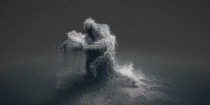
“unnamed soundsculpture” by Daniel Franke & Cedric Kiefer (2012)
A dance piece captured using three Kinects and assembled into a volume of 22,000 points.

“unnamed soundsculpture” by Daniel Franke & Cedric Kiefer (2012)
A dance piece captured using three Kinects and assembled into a volume of 22,000 points.
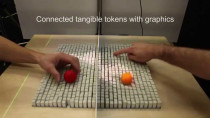
“Physical Telepresence” by Daniel Leithinger, Sean Follmer, Alex Olwal, Hiroshi Ishii (2014)
“Physical Telepresence” is a project by the Tangible Media Group at the MIT Media Lab. The project is an interface which tracks hands and 3d objects on one end of a video chat and recreates the shape using a grid of variable height physical columns.

“Physical Telepresence” by Daniel Leithinger, Sean Follmer, Alex Olwal, Hiroshi Ishii (2014)
“Physical Telepresence” is a project by the Tangible Media Group at the MIT Media Lab. The project is an interface which tracks hands and 3d objects on one end of a video chat and recreates the shape using a grid of variable height physical columns.
